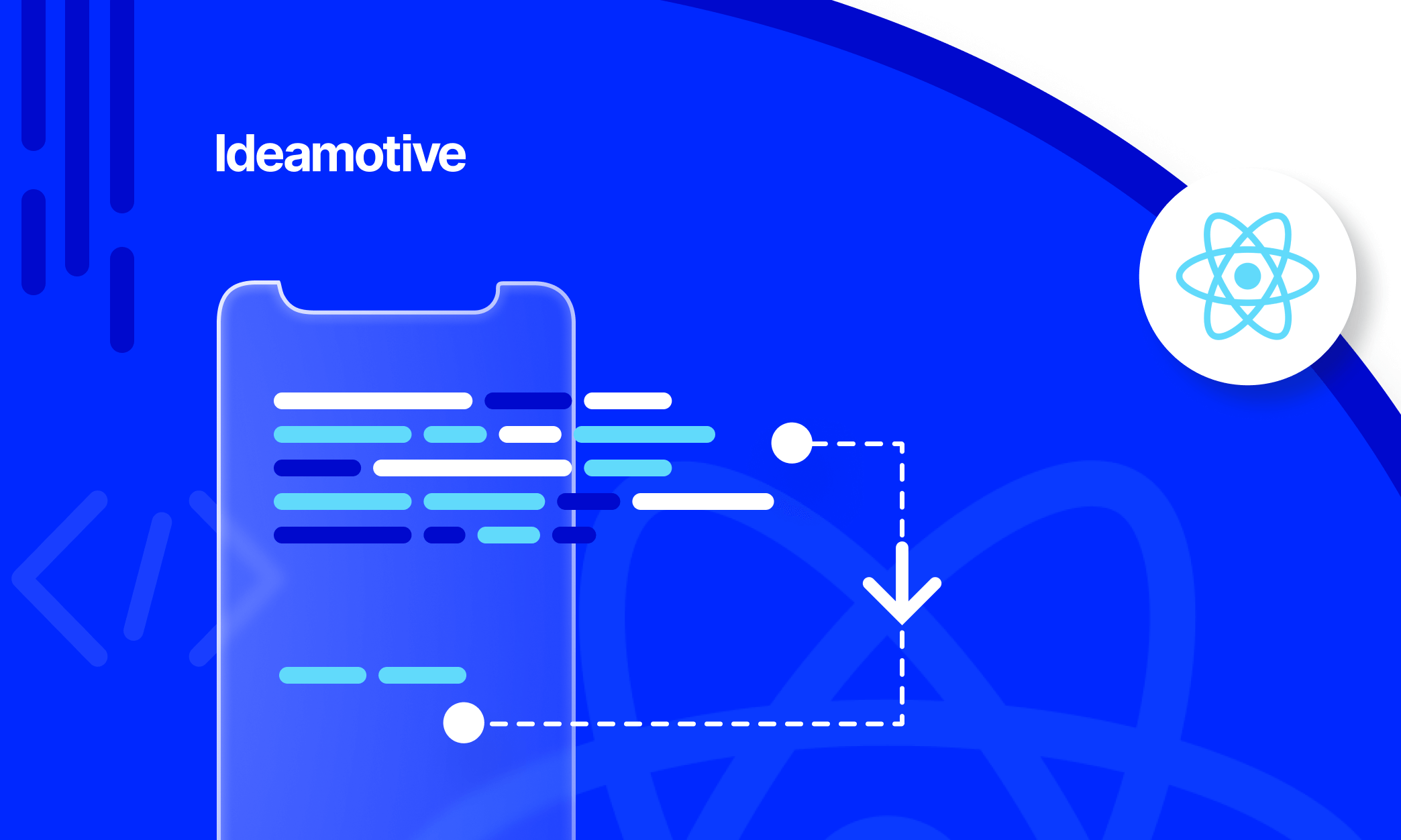As the React Native technology continues to develop and earn more trust from the developers’ community, certain features, like the ready-made React Native libraries and UI components, have started to surface to expedite and fast-track development with regards to the technology.
With React Native, a team of iOS and Android developers doesn’t need to create separate apps. Instead, one app can now be coded in JavaScript and used on different platforms seamlessly with one base code.
However, as you can imagine, there are so many of these ‘boilerplates.’ A Github analysis shows there are about 2,875 repositories on React Native boilerplates. So, to save you precious time, read this article and discover the top eight React Native boilerplates to use in 2023.
We’ll also cover some of their features like the UI architecture, navigation type, and testing capacity of the boilerplates. This way, you can decide which one of them is perfect for your project. So, let’s get to it!
EDIT: We updated this article so it's still relevant in 2023. Have a good read!
What is a boilerplate?
A boilerplate is a piece of code that is generated to allow developers to start a project without going through the time-consuming configuration process. The boilerplate saves developers from having to manually repeat several pieces of code throughout the project.
Boilerplate vs. Boilerplate template
While a boilerplate reduces development time by replicating chunks of code, a template is a feature that you can enrich your boilerplate with, for example adding TypeScript to create-react-app.
Benefits of Using Boilerplate Code
A significant benefit of adopting boilerplates is that it saves time and has a short learning curve. Instead of coding everything from scratch, you include a code template. Besides, thanks to a specific frame scaffolding code, the designer's work becomes more effortless.

However, the additional code upkeep and the need to navigate someone else's code are some of the challenges of boilerplate codes. In addition, the code of configuration information may be dumped by boilerplate commands, so you'll have to manually resolve bug lists, clean a lot of code, and update the dependencies from the original repository.
React Native boilerplates comparison
Because the developers' tastes and the necessary projects differ, there is no such thing as the best React boilerplate since each boilerplate tackles various problems. However, we will be discussing the most popular boilerplates in 2022 by comparing some of their features like the UI architecture, navigation type, and testing capacity of the boilerplates.
- Ignite by Infinite Red
Ignite is a cutting-edge React Native development project boilerplate by Infinite Red that includes a CLI, component/model generators, and more.
With Expo compatibility out of the box, Ignite is the most popular React Native app boilerplate for both Expo and plain React Native. In this TypeScript-ready project, MobX is used for state control, React Navigation is used for routing and Navigation, Apisauce is used to interface with REST servers, and the Jest platform is utilized for testing.
This boilerplate is productive as it is Flipper-, Reactotron-, and Expo-ready from the start. Also, this boilerplate uses MobX instead of Redux for state management, as it is believed to be a lot easier to understand. It also features AsyncStorage that is used in conjunction with MST to restore state.
Ignite-CLI is the command-line interface for Ignite. Instead of installing and managing a specific version of the CLI universally, you should utilize npx, which incorporates Node.js, to access the newest version of the CLI at runtime.
After completing all of the conditions listed on this project's page, you should be able to create a new project using the following commands:
# for vanilla React Native
npx ignite-cli new PizzaApp
# or for Expo-powered:
npx ignite-cli new PizzaApp --expo
- React Native Starter Kit by mcnamee
React Native Starter by mcnamee is a React Native boilerplate utility that quickly gets you up and running.
Redux is used for state management, React Native Router for navigation and routing, NativeBase for UI architecture, React Native Vector Icons for icons, Axios for communicating with REST servers, and the Jest platform for testing.
The developers of the boilerplate made sure to include the batteries. This boilerplate includes NativeBase, a package that offers key cross-platform React Native UI components and also has Redux persist, a framework that allows us to save the redux store to our browser's local storage.
One can use this boilerplate to create a new project by simply cloning it with the command:
clone https://github.com/mcnamee/react-native-starter-kit.git your_app_name
- React Native Boilerplate by TheCodingMachine
The React Native Boilerplate from TheCodingMachine is a React Native project for building solid cross-platform smartphone apps with a clear separation of problems between user interface, state management, and business logic.
This boilerplate includes the Redux state management system, React Navigation for routing and Navigation, Axios for dealing with REST servers, and the Jest framework for testing.
The convenient thing about this boilerplate is that it is easy to set up and includes the i18next internationalization library.
Before using this project, go to the React Native environment setup and select the React Native CLI Quickstart tab. Then, follow the instructions for setting up the target operating systems and implementing them.
After meeting all of the conditions listed on this project's page, hire Dedicated React Native Mobile Developers to build a new project with the following command:
npx react-native init MyApp –template @thecodingmachine/react-native-boilerplate
- React Native Template TypeScript by the React Native community
Here is a short React Native template for quickly learning TypeScript.
This TypeScript-ready project has no libraries for state management, Navigation, UI architecture, or interfacing with REST servers because it is designed to be simple. However, it does have the Jest system for testing.
Therefore, React Native developers looking to get a project up and running in no time would largely benefit from this boilerplate.
After completing all of the conditions listed on this project's page, you should be able to create a new project with the following command:
npx react-native init MyApp —template react–native–template–typescript
- ReactNativeSeed by GeekyAnts
GeekyAnts' ReactNativeSeed project offers a variety of React Native boilerplates to pick from. The website for this project allows you to choose whatever features you want in your boilerplate.
For state management, you may use MobX or Redux; for navigation and routing, you can use React Navigation; for static type checking, you can use TypeScript or Flow; and for the stack, you can use Create React Native App (CRNA) or simple React Native.
NativeBase for UI design, React Native Vector Icons, and the Jest framework for testing are included in some of the boilerplates.
This entry is remarkable since it allows you to select the components you want in your app before downloading the boilerplate.
- React Native Boilerplate by victorkvarghese
Reactive Native Boilerplate by victorkvarghese is a type-based architecture for building React Native apps with authorization flow using React, Redux, Sagas, and hooks.
Redux is used for state management, React Navigation for routing, React Native Paper for UI design, React Native Vector Icons, Axios for communicating with REST servers, and the Jest framework for testing in this TypeScript ready project.
Two of this boilerplate's most significant selling factors are the fact that the routing and Navigation include an authentication flow and the UI is designed with React Native Paper.
The React Native Paper is a set of fully customizable and production-ready React Native components that adhere to Google's Material Design principles.
You should establish a new project with the following after completing all of the conditions given on this project's page.
To begin, clone the boilerplate repository as follows:
git clone https://github.com/victorkvarghese/react-native-boilerplate.git <your project name>
Go to the root directory of the project:
cd <your project name>
Remove the .git folder:
rm -rf .git
Once you've updated the project name with react-native-rename, you should be ready to go:
npx react-native-rename <newName>
- Re-start by react-everywhere
Re-start by react-everywhere is a React Native template that targets various platforms with a single codebase, including web, mobile, and desktop.
This boilerplate employs Redux for state management and React Router for routing and navigation. Regrettably, there is no library for UI design, communicating with REST servers, or testing included with this boilerplate.
The beautiful thing about this boilerplate is that it allows you to use React Native APIs and a single codebase to target many platforms (Android, iOS, Web, Windows, and Electron).
You should establish a new project with the following after completing all of the conditions given on this project's page.
Using react-native-cli, create a new react-native project with re-base as a template:
react-native init <Your Project Name> --template re-base
Template inheritance is not supported in React Native. Install derivative templates like re-dux or re-route right on top of the newly built project if you wish to use them. If you get a warning that the project already exists, say yes to overwrite the files that are required:
react-native init <Your Project Name> --template re-dux
react-native init <Your Project Name> --template re-route
react-native init <Your Project Name> --template re-start
The re-start template requires both re-route and re-dux, so make sure to install them in that sequence.
Because react-native-template doesn't support adding custom scripts to package.json, finish the project configuration with./finishInstall.js.
- React Native Template – TypeScript by AmitM30
AmitM30's React Native Template: TypeScript is a template that helps you get started building robust apps using React Native and TypeScript by pre-installing the most often utilized resources.
This boilerplate uses Redux for state management, React Native Navigation for routing and Navigation, React Native Paper for UI design, React Native Vector Icons, and Axios for communicating with REST servers, and the Jest testing framework.
The fact that it uses React Native Navigation for routing and Navigation makes it even more amazing than the others previously mentioned. Compared to the React Navigation library, which is utilized in some of the other boilerplates in this article, React Native Navigation provides 100 percent Native platform navigation on iOS and Android and makes your app more performant.
You can use this boilerplate to start a new project by just cloning it with the following command:
git clone https://github.com/AmitM30/react-native-typescript-boilerp
Summary
Developers have different preferences when it comes to their opinions on the best React Native boilerplates. The situation is akin to asking about the best language for writing a code, as developers will always support their most preferred language.
However, you should note that each boilerplate is useful for solving particular tasks. Furthermore, when selecting a boilerplate, bear in mind that your choice is also essential for scaling and maintaining the site or application.
If you are still unsure of the best React Native boilerplate to use, you can reach out to us. Our team of expert software developers is always ready to share their knowledge and give you the best advice.
You may also work with our Ideamotive Talent, to develop your product. We will assemble the perfect team for your specific projects, help you grow your career, and work on your terms.
Contact us today to discuss the details!















